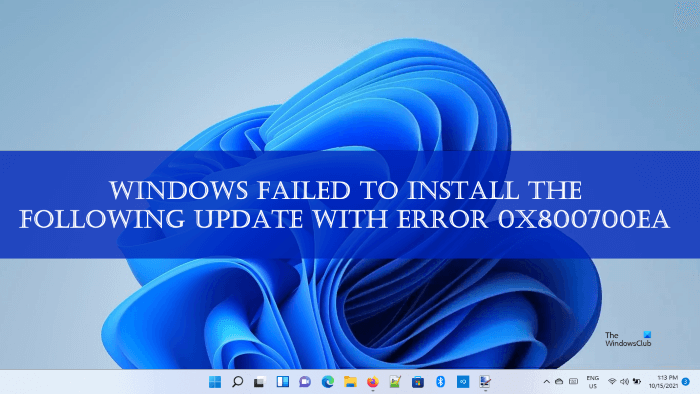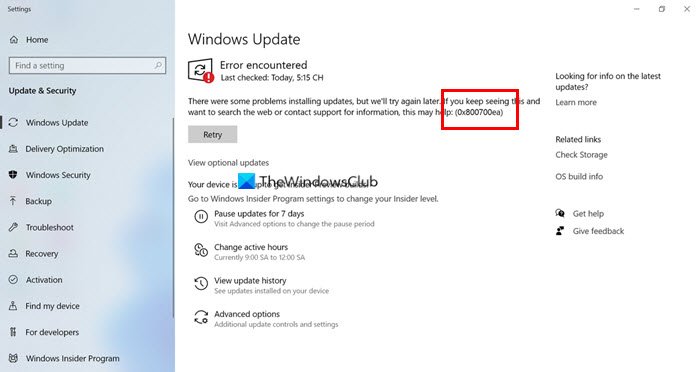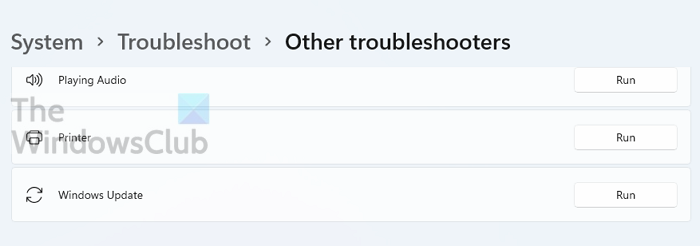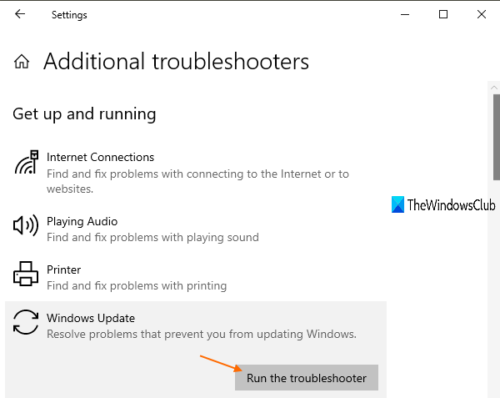In this post, we will talk about solutions to fix the Windows Update error 0x800700ea. According to the users, this error occurred on their system while installing the Cumulative Update. There could be many causes of this error, like missing or corrupted system files, corrupted Windows Update Components, etc.

Sometimes, antivirus software prevents Windows from installing updates. Hence, before you proceed, we suggest you disable your antivirus software temporarily and then update your system. Don’t forget to turn on antivirus protection again.
Windows updates also fail if you have low disk space on your system. To get Windows update installed successfully, you should have:
- Minimum 16 GB of free space if you have a 32 bit Windows OS.
- Minimum 20 GB of free space if you have a 64 bit Windows OS.
Therefore, we suggest you delete unnecessary files to free up some disk space.
Windows failed to install the following update with error 0x800700ea

The following fixes may help you get rid of this error. But before you proceed we recommend you create a System Restore point so that you can restore your system to the previous working condition if any error occurs.
- Run Windows Update Troubleshooter.
- Reset Windows Update Components.
- Run SFC Scan.
- Install Windows update manually from Microsoft Update Catalog.
Let’s see these troubleshooting methods in detail.
1] Run Windows Update Troubleshooter
Windows Update Troubleshooter is an automated troubleshooting tool from Microsoft that detects the Windows update problems and fixes them (if possible). Run this troubleshooter and see if it helps.
Windows 11 users have to follow the below steps to run Windows Update Troubleshooter:

- Right-click on the Start menu and select Settings.
- In the Settings app, select System on the left pane.
- Scroll down and click on the Troubleshoot tab on the right side.
- Now, click on the Other troubleshooters tab.
- Click on the Run button next to the Windows Update tab. Follow the on-screen instructions.
The following steps will help you run this troubleshooter on Windows 10:

- Launch Settings app by pressing Win + I keys.
- Go to “Update & Security > Troubleshoot.”
- Click on the Additional troubleshooters link on the right side.
- Now, click Windows Update and then click Run the troubleshooter.
- Click Next and follow the on-screen instructions.
After the troubleshooting gets completed, restart your computer and check if you can install the update.
2] Reset Windows Update Components
If the Windows update is failing to install due to the corruption in the Windows Update Components, resetting them may fix the issue.
After resetting the Windows Update Components, restart your computer and see if you are receiving the same error while updating your system.
3] Run SFC Scan
SFC (System File Checker) is a utility developed by Microsoft that scans your system for corrupted system files and repairs them. System file corruption is one of the reasons for Windows Update failure. Therefore, you should run an SFC scan and see if it helps.
4] Install Windows update manually from Microsoft Update Catalog
If none of the above methods fixed your issue, installing Windows updates manually from the Microsoft Update Catalog can help.
How do I fix Windows update not installing?
If Windows update is not installing on your system, you can try some general things:
- Temporarily disable Windows Defender or your third-party antivirus software.
- Free up some disk space on your hard drive.
- Unplug all the hardware devices connected to your computer except the keyboard and the mouse and check if you can install the Windows update.
How do I fix Windows update error 0x80080005?
You may receive the Windows update error 0x80080005 if your antivirus software or Firewall is blocking the update, Windows Update Components are not working properly, or your system files have been corrupted. Sometimes, only a restart fixes the issue. If it does not work, try to install the updates after disabling your antivirus software. The Windows Update error 0x80080005 is also associated with the security descriptors of BITS (Background Intelligent Transfer Service). Hence, resetting the Windows Update Components can also fix this issue.
We hope this article helped you fix the issue.
Leave a Reply